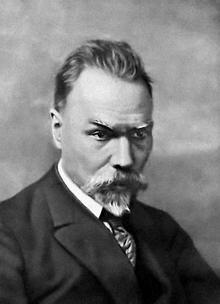Symbolism in Russia differs significantly from this trend in the art of other European countries. Originating at the end of the nineteenth century, Russian symbolism has its own characteristics that make it recognizable and unique. Its origin is associated with the activities of famous publicists and poets - Z. Gippius, D. Merezhkovsky, V. Bryusov. The symbolism in their work is primarily religious-mystical, Christian. In other words, comprehension of a symbol is an act of knowledge of God. Bright representatives of this direction can be considered S.M. Soloviev and F.M. Dostoevsky.

Basically, literary symbolism is a unity of ideas, a common focus and meaning. Symbolism in painting is controversial and ambiguous, and in some way comes into ideological conflict with the literary basis. The answer to the writers ’spiritual search is a pure reflection of spirituality (Vision to Youth Bartholomew, Hermit, Works of St. Sergius M. Nesterov), an overly pathos mood - irony and grotesque (Spring by M. Chagall, Bathing the Red Horse "Petrova-Vodkin and so on).
Symbolism in painting was first used by M. Vrubel. Bright, intense, it can be said, mosaic painting of this great master is epic, monumental. It reflects a contradiction between the real world and the imagination of the author. His works immerse us in the era of heroes of epics, a hoary antiquity that appears before us as something fabulous and fantasy.
A vivid example of how symbolism is shown in painting is Vrubel's famous work "Pearls". The infinite universe, shimmering in a mysterious and fabulously mother-of-pearl tone, is reflected in a tiny pearl. Or another, no less famous, "Demon sitting." Thanks to compositional techniques, the look of the character depicted in the picture is mesmerizing and mesmerizing, inspiring a sense of fear and internal discomfort. But, despite such mixed feelings, it is impossible to look away from him.
Symbolism in painting was further developed thanks to the work of the association of artists under the name "Blue Rose". The most striking representative of this group was V.E. Borisov-Musatov. The period of creativity of this artist coincides with the turn of the century, which was reflected in his manner of writing. Starting from impressionistic studies, he gradually came to a new style of panel paintings that organically convey the imagery that symbolism in painting is filled with. The famous work "Tapestry" seems ordinary at first glance and does not attract the simplicity of the plot. However, in the manner in which the two women are talking, an immeasurable depth is hidden. The viewer is given the special tension of the composition. There is a feeling that the "Tapestry" hides the mysterious signs of higher being and something unknown.
Over time, Symbolist artists unite around the magazine "World of Art". The turning point in the history of the state was, as it were, predicted in the very spirit of symbolism, and later transmitted and conceptualized in the paintings of artists. In post-revolutionary times, the techniques of this style served as a tool for expressing a new era: the “New Planet” by K. F. Yuon, the “Bolshevik” by B. M. Kustodiev, etc.